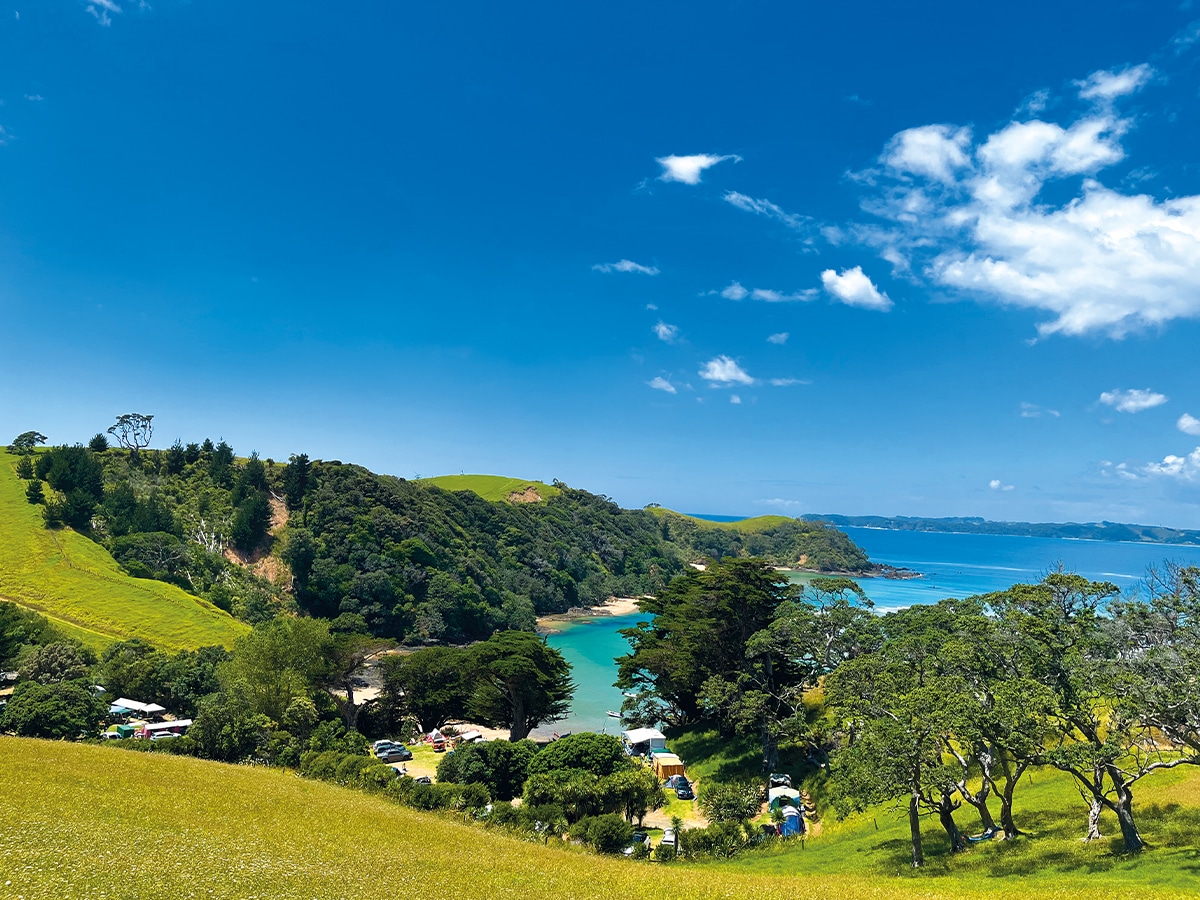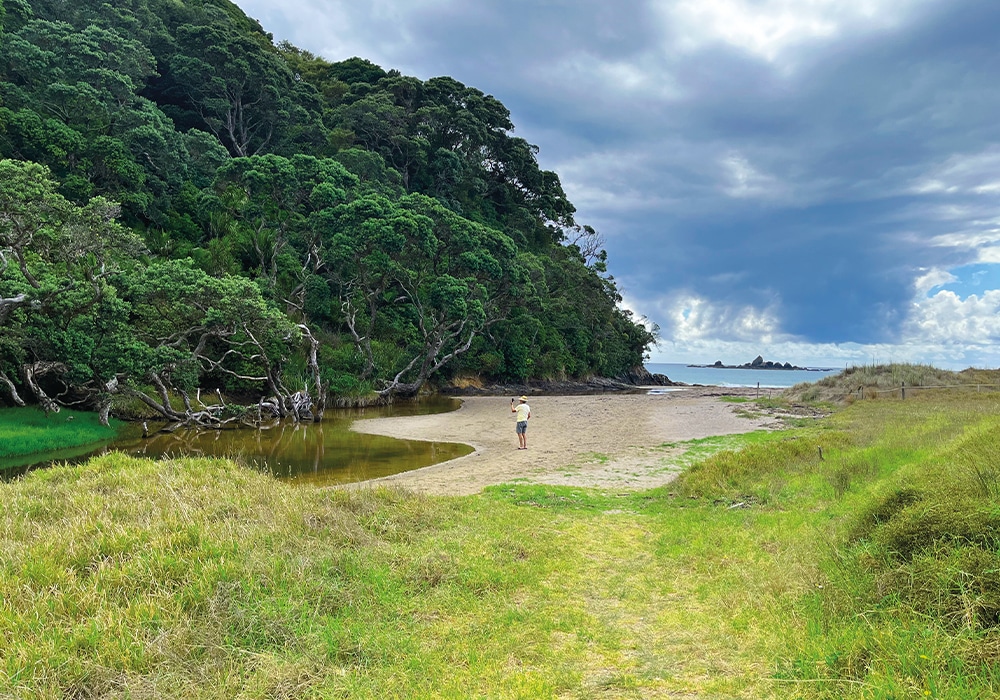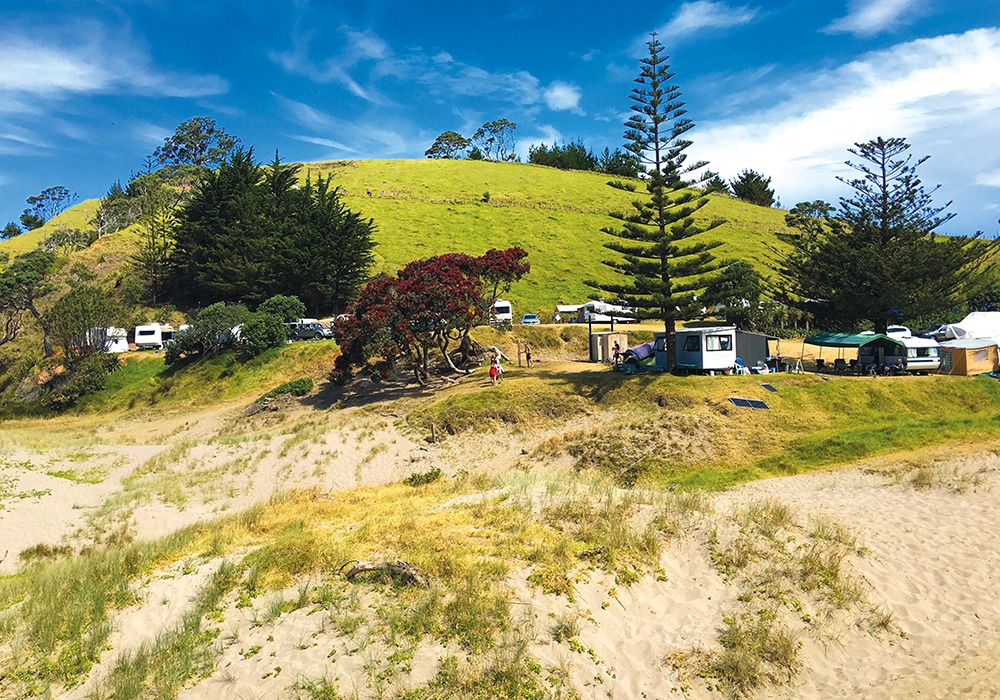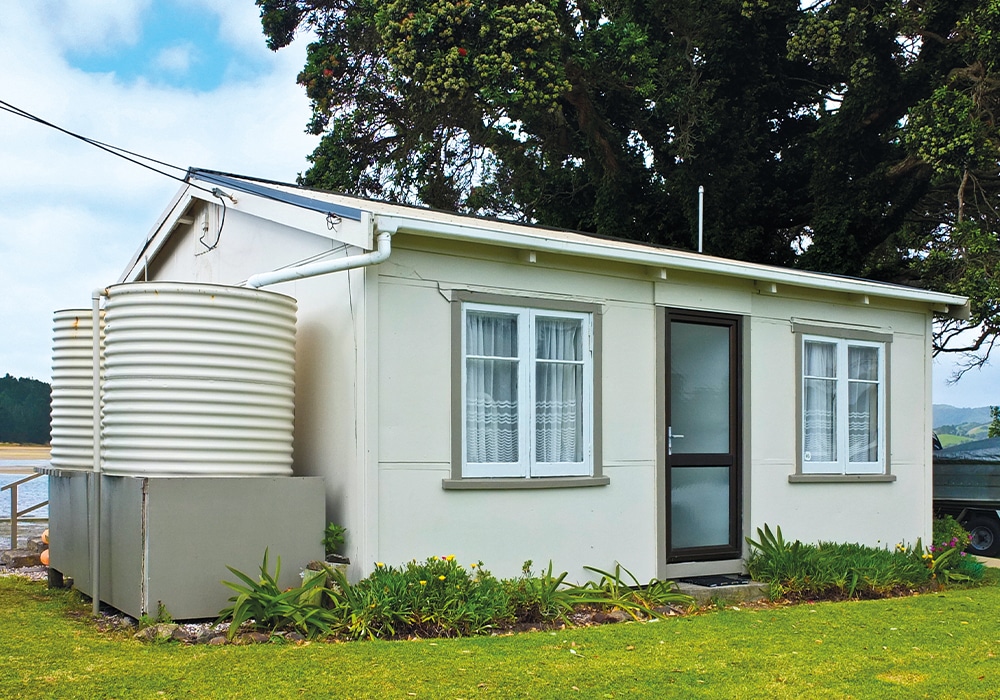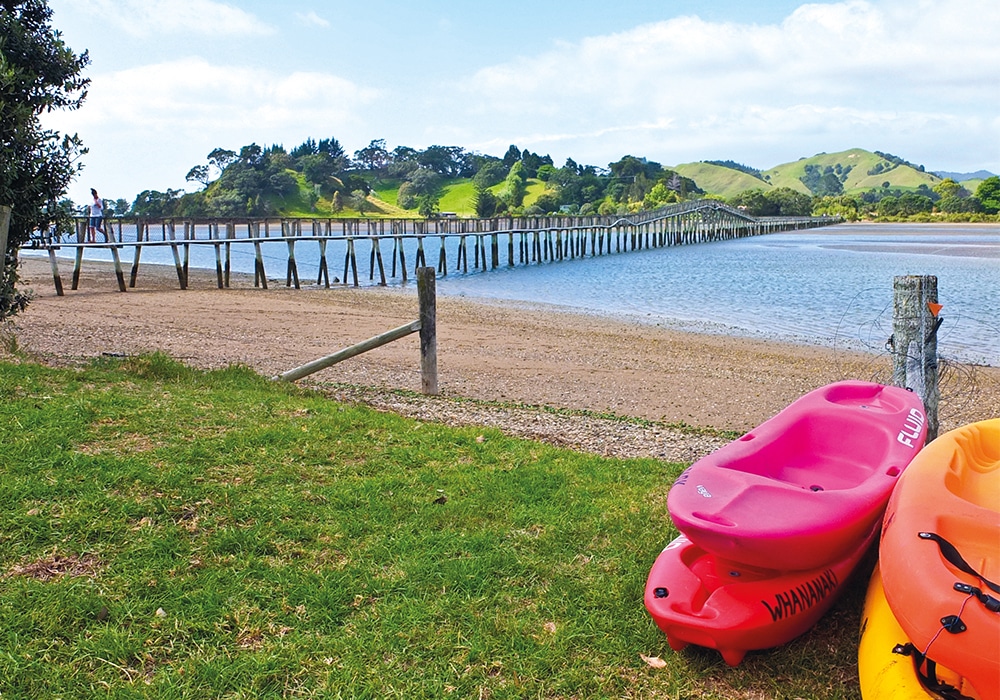It’s hard to resist the lure of the Far North, where pōhutukawa trees hang out gnarly limbs on shady beaches and the sun-winking sea curls onto salt-and-pepper sand. Jill Malcolm finds her happy place in Whananaki.
About 22km inland from Hikurangi, the barely-there, nostalgic villages of Whananaki North and South are divided by a wide curving inlet and connected by the longest footbridge (so it is said) in the southern hemisphere. Its greying timber trestles, 395 metres long, arch across the water like an elongated skeleton. The inlet’s north head is a long undulating peninsula owned and farmed since 1920, by generations of the Barron family, currently Helen and Bruce, a delightfully down-to-earth, ever-smiling couple who in summer turn their 75-hectare property of Motutara Farm into a beachside camp. It is one of those retro campgrounds that are becoming rare in New Zealand. Here, one day flips over into another without fuss.
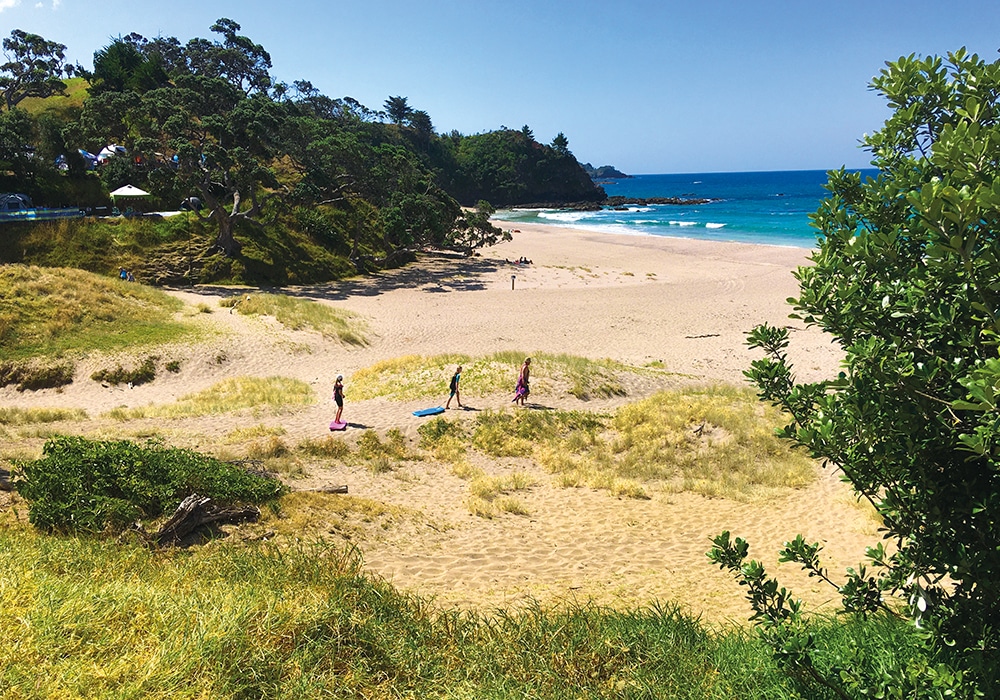
Motutara Farm is perfect for the sybarite that I am. But if I am moved to rev up my heartbeat, the tip of the peninsula has been gifted as a reserve and is now administered by DOC. Walkways across undulating country, thickly carpeted in long grass, lead to rocky inlets, superb ocean vistas and secluded beaches.
Old fashioned camping
Levelled hillside terraces and sheltered valleys have been marked out for tent dwellers and RVers, some of whom have been coming here for several generations. Most camping areas embrace two surf beaches, Barron’s and Kings, where whipped-cream surf folds against the sand or, if the weather dictates otherwise, swollen waves thunder ashore and only surfers and emboldened swimmers dare to brave the sea. On the other side of the peninsula, campsites border the turquoise estuary where at high tide, kayakers, paddleboarders and rug rats find gentler waters.
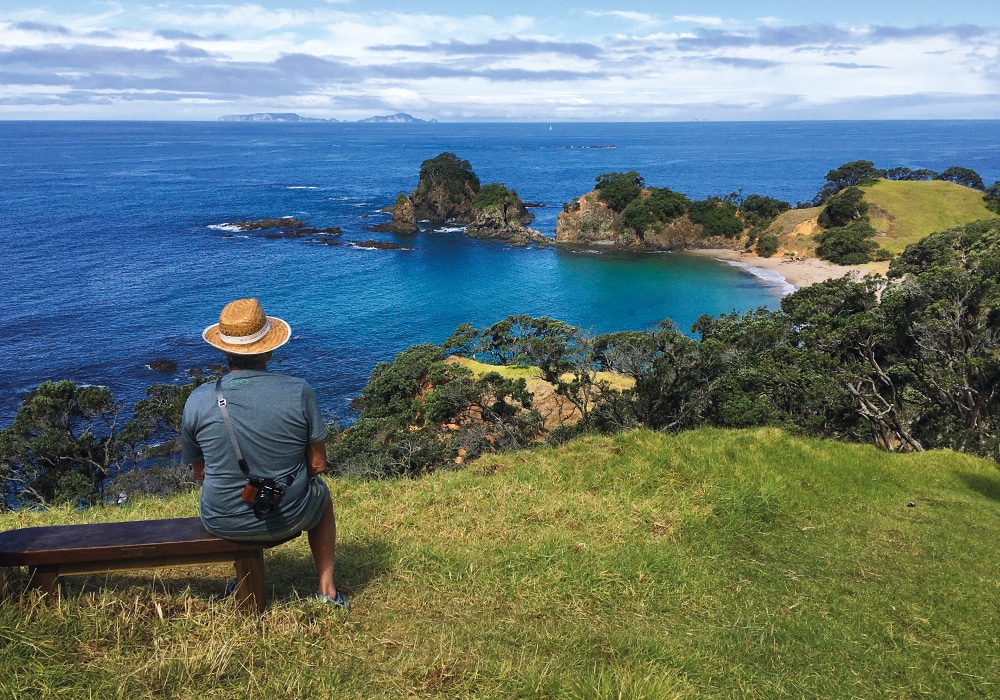
Here, I encountered an overfed man lounged in a striped deck chair, his prosperous belly bared to the sun, his face shaded by a large floppy hat. I mentioned in passing what a lovely spot it was. “Don’t tell anyone,” he said. “This is camping as it used to be…away from it all. I’ve been coming here for 20 years and I’d hate to see it spoiled by the masses.” He’s going to be mad at me if he reads this, although it’s not as if the camp is remote or unknown. I saw what he meant.
Apart from long-drop toilets, bore water and small wooden sheds, where we sluice under solar showers, there are no amenities. We eat simply, dress minimally, sleep when we are tired, exercise more and if we socialise, we take our own food, drinks and chairs. The only downside of Motutara Farm is that it is only open for a few months during the summer. A little further north, opposite a caravan serving coffee and fruit ice cream, is the entrance to Otamure Beach DOC Camp.
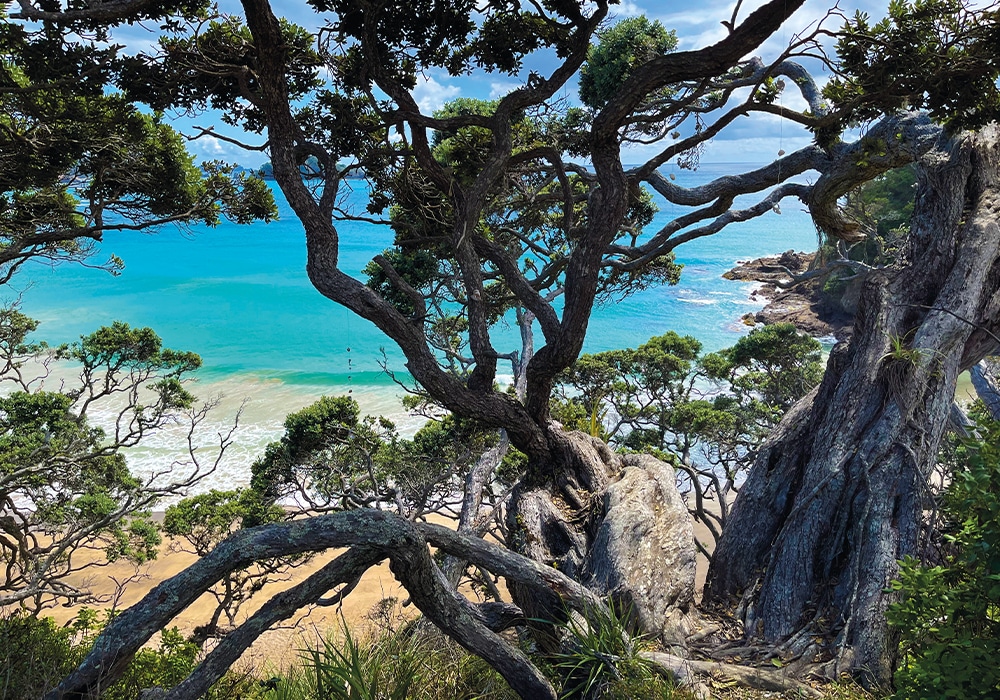
Ridged hillsides cradle the camp’s grassy flat, crowded with the tangled limbs of old pohutukawa, leading to a long, camelcoloured beach scooped out between rocky promontories. The sea is mild here, sheltered by the land’s long arms. At the camp it was heartening to see kids just being kids. They created rope swings hung from obliging pohutukawa limbs; played frisbee on the lawn; built inventive sandcastles and raced each other up the hills. Released from the trappings of modern life, their excited cries travelled into the open sky.
Ducks and uninvited guests
No dab hand on the end of a frisbee, I walked along the beach to find the wildlife reserve at the northern end of the camp. Two rare pāteke (brown teal ducks), heads buried under their wings, nestled in the long grass by a stream. The sanctuary has been set up for their benefit. The birds are only found in New Zealand and, unless they are carefully protected, they soon won’t be found anywhere. The stream also marks the start of a track that climbs steeply to a ridge and then 96 steps (I counted them) drop precipitously to the secluded sandy bay of Tauwhara to which there is no road access.
Back at camp, we discovered we’d inherited some ducks of our own; a pair of mallards had taken up residence under our awning. As everyone knows, ducks’ toilet habits are random and voluminous. So, the birds, endearing as they were, had to go. They had other ideas, and no amount of coaxing persuaded them to waddle off. They settled down for the night and quacked us awake early next morning.
More camping places
If you need to top up on groceries, there’s a small general store in the Whananaki North village and during summer weekends there is a camping option at the school where the grounds are made available for motorhomes and caravans to park. It’s on the estuary and has toilet facilities, washing machine and hot showers. There’s not a lot of shade, but given its locality, the rate per night seems reasonable. Another alternative at any time of the year (although also crowded in the height of summer), is the pleasantly appointed Holiday Park on the lip of the estuary next to the village hall. It has a swimming pool, good facilities and shady sites.

Going walkabout
From Otumare and Motutara Farm camps it’s about three kilometres to the village for stocking up. I chose to walk. The road dips down a steep hill to the waterside where rumpty little baches, crammed up against the shoreline, seem to fall right out of the pages of the ‘40s and ‘50s. It then follows alongside the inlet, which is flanked by a grassy airstrip. The store is a favourite for gaggles of kids with their hot breaths and sandy skins, eyeing up the tempting sweet treats in agonies of indecision.
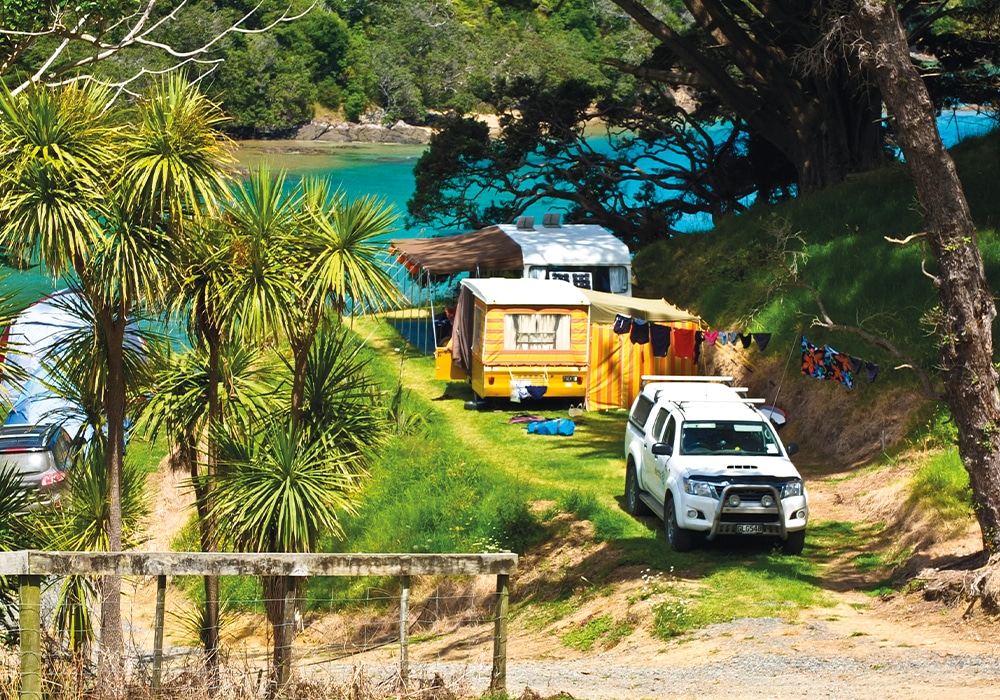
A small outlet next door does juicy hamburgers, and fish and chips heavily sprinkled with lemon pepper and wrapped in yesterday’s newspaper. We ate this fishy treat on a table outside the shop and were joined by a young Spanish couple, Gilda and Riccardo, who had been caught in NZ by Covid. They said they didn’t mind their change of plans at all and were fuelling up on the Kiwi staple before tackling the 12km return coastal walk to Sandy Bay. Gilda held a piece of battered fish aloft; “It’s muy interestante,” she said, “that everyone eats these in their fingers.”
The coastal walkway starts by crossing the bridge to South Whananaki and then winding through bush and farmland with commanding views of the sea and the Poor Knights Islands. About two kilometres from the start is a short access track to the Capitaine Bougainville memorial on the headland of Oruaea Bay. This simple monument is dedicated to a cargo vessel, which on 5th September 1975, was en route to Sydney, with eight passengers and 29 crew on board, when close to the shore of South Whananaki it caught fire and sank in a ferocious sea with the loss of 16 lives. Joining us at our table came Frank and his wife from Rawhiti, whose holiday home is a 1971 Oxford caravan. “Me and m’wife, we come here every year,” he said, biting into a piece of fish. “We reckon Whananaki is the best spot north of the Bombay hills.” I raised a chip to that.
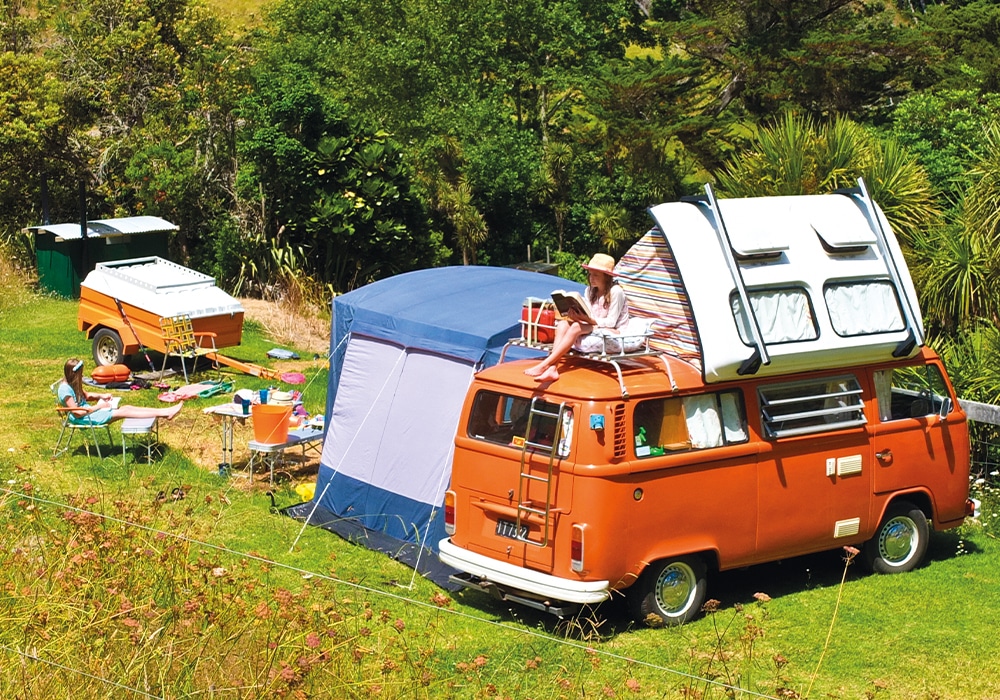
Places to stay
Whananaki Holiday Park
2160 Whananaki North
whananakiholiday.co.nz
Phone: 09 4338896
Motutara Farm Camp
42 Rockell Road
Whananaki North
campingholiday.co.nz
Phone: 09 4338252
Otumare DOC Camp
208 Rockell Rd
Whananaki North
doc.govt.nz
Phone: 09 4338402
NOTE: Book early for all these camping areas during the summer holiday period

